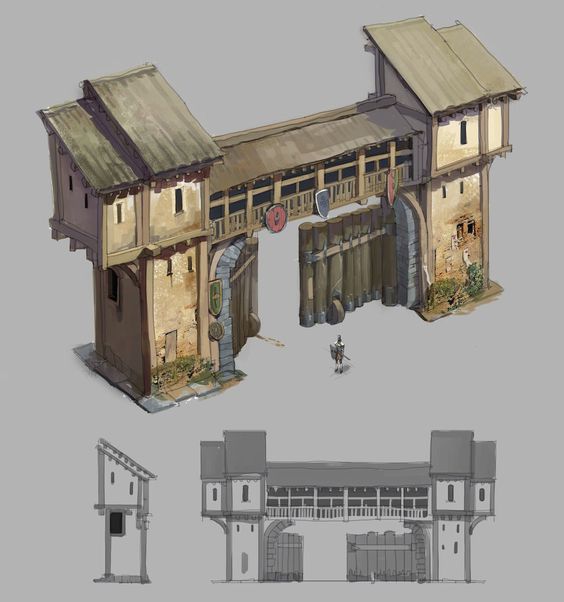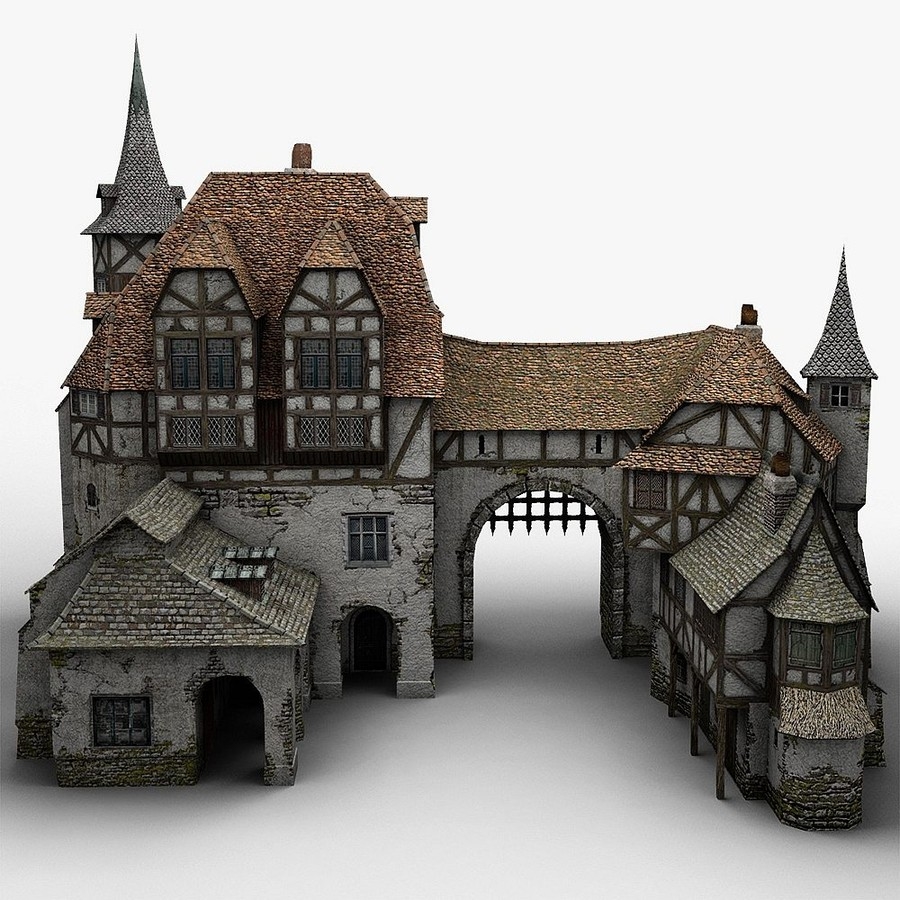Archive
Golems in Warhammer
Golems have a rather patchy history in Warhammer and WFRP. The conventional four types – clay, flesh, iron, and stone – were established in fantasy games by the AD&D Monster Manual back in 1977, and Citadel made a few Golem figures in the late 70s and early 80s.


No rules were published for Golems in Warhammer, although it might be argued that the Ushabti from the Tomb Kings army lists are a form of Golem.
A couple of Flesh Golems appeared in WFRP 1st edition adventures. Death on the Reik featured the Wittgenstein Monster, and a similar creature appeared in the adventure “The Curse of the Reichenbachs” in Death’s Dark Shadow. Golems were mentioned in the WFRP 2nd edition supplements Liber Necris and Renegade Crowns, but without game stats. A kind of Flesh Golem appeared in Forges of Nuln, but it was far from standard – if a Flesh Golem can ever be described as standard.
My earlier post on Gargoyles covered the living-statue type of that creature, and can be used for Stone Golems. Another take on Stone Golems is given below, along with the other three “classic” Golem types. As always, everything that follows is completely unofficial and should be regarded as a fan work. No challenge is intended to trademarks or copyrights held by Games Workshop, Cubicle 7, or anyone else.
Golems
Imbued with a semblance of life through magical and alchemical processes, Golems are Constructs of flesh or other materials. Most take humanoid form, but theoretically that can be any shape.
A distinction must be made between true Golems and the humanoid mechanical constructs made by some Dwarven and other engineers. Golems are animated by magic rather than engineering, while the others rely on steam and other power sources and move by the action of gears, wires, and levers.
Stone Golems include the massive Ushabti of ancient Khemri, animated Gargoyles, and other living statues. They are often created as guards, and given orders to attack anyone except their controllers.
| M | WS | BS | S | T | I | Ag | Dex | Int | WP | Fel | W |
| 4 | 45 | 25 | 75 | 75 | 10 | 10 | 10 | – | – | – | 28 |
Traits: Armour 3, Construct, Dark Vision, Fear 1, Hardy, Immunity (poison, fire, electricity), Immunity to Psychology, Magical, Painless, Stupid, Territorial (one building or small area), Weapon +10
Optional: 2 Fists +10, Die Hard, Size (Small to Enormous), Magic Resistance 1-2, Ranged (Throw) +10
Iron Golems (and more rarely, Golems of brass or other metals) are also used as guards and troops, although they can only guard a location for a few centuries before becoming corroded and useless. Their great strength makes them useful as menials and labourers.
| M | WS | BS | S | T | I | Ag | Dex | Int | WP | Fel | W |
| 4 | 45 | 25 | 70 | 70 | 10 | 10 | 10 | – | – | – | 28 |
Traits: Armour 2, Construct, Dark Vision, Fear 1, Hardy, Immunity (poison, fire), Immunity to Psychology, Magical, Painless, Stupid, Territorial (one building or small area), Weapon +9
Optional: 2 Fists +9, Die Hard, Size (Small to Enormous), Magic Resistance 1-2, Ranged (Throw) +9
Clay Golems are less durable than most other types but easier to make, and the secrets of their construction are more widely available. There are many tales of a Clay Golem being constructed by a learned priest or other scholarly individual as a bodyguard or servant.
| M | WS | BS | S | T | I | Ag | Dex | Int | WP | Fel | W |
| 4 | 25 | 25 | 65 | 65 | 10 | 10 | 10 | – | – | – | 18 |
Traits: Armour 1, Construct, Dark Vision, Fear 1, Immunity (poison), Immunity to Psychology, Magical, Painless, Stupid, Territorial (one building or small area), Weapon +8
Optional: 2 Fists +8, Die Hard, Size (Small to Large), Magic Resistance 1
Flesh Golems are often made by necromancers, although they are not undead. Instead, they use alchemical processes to imbue a dead body – or a construct assembled from parts of several bodies – with a semblance of life and intelligence.
| M | WS | BS | S | T | I | Ag | Dex | Int | WP | Fel | W |
| 4 | 20 | 0 | 60 | 60 | 10 | 10 | 10 | – | – | – | 18 |
Traits: Afraid (Fire), Construct, Fear 2, 2 Fists +7, Stupid, Territorial (one building or small area), Weapon +7
Optional: Die Hard, Size (Large)
The Monsters so Far:
Shrove Tuesday

Mike Brunton: White Dwarf editor, Realm of Chaos author, Total War head writer, and shrove aficionado. Dearly missed by all who knew him.
It’s Shrove Tuesday, and that always makes me think of my friend Mike Brunton. Readers may know him as a legend of the UK’s games industry, and I’ll add some links to interviews at the end of this post.
We lost Mike less than a year ago, but his stories live on. Everyone who knew him can recount at least one ridiculous (but strangely believable) story he told, or quote one of his many quotable quotes, or tell of some incident or anecdote in which he figured. This is one of my favourites.
Shrove Tuesday is the opening of the shrove season. These small creatures overwinter on Scotland’s grouse moors, feeding on the heather to keep it from overgrowing. On this day they are cleared out so the grouse can nest without danger to their eggs. The race is on to bring the first brace of shrove to the Savoy in London!
Thanks, Mike, for all the laughter and silliness you brought to those around you.
Links
An interview from 2014 on the Realm of Chaos 80s blog.
Mike’s last interview, for the Grognard Files podcast.
Monday Maps #5: An Interesting Patreon
Instead of just one map, or one type of building, this week I’ve found a Patreon campaign that seems worth a look.
Jerome Huguenin creates plans and isometrics under the title Architecture for Adventure. His Patreon campaign has two very affordable backer levels – $2/month and $3/month – and he gives a lot of his plans away for free. Plans like this one: Map 30, Doctor’s House.

One of the delights you’ll find for free at the Architecture for Adventure Patreon page – whether you’re a backer or not.
From what I’ve seen, Jerome’s work is easily as good as anything you’ll find in a professional publication – and at $2.00 or $3.00 a month, cheaper than most maps you’ll find. You won’t be sorry you checked it out.
And now for something a little (but not completely) different:
Patreon. It will probably play a part in my unfolding plans for two #secretprojects. I’m doing some research, but I would really love to hear from all of you.
Do you back Patreon campaigns? Would you back mine?
What would you be willing to pay per month, assuming one article per month? Or would you prefer to pay per item?
What other Patreons do you currently back? What kinds of rewards would you like to see at higher levels?
Do you have a Patreon of your own? Is there any advice you would be willing to share with me? Any tips, or warnings?
Please let me have your thoughts in the comments section below. And if you’d like to be kept in the loop, take a moment to follow this blog. I’ll be using it as the main channel for news and updates.
Thanks!
Women in Horror Month
February is Women in Horror Month. This event has grown over the years into an international movement supporting and celebrating women authors, artists, film-makers, and everyone else who contributes to the horror genre. If you don’t already know about it, you should. Here are a few links to get you started.
The Women in Horror Month web site: https://www.womeninhorrormonth.com/
The WiHM Facebook page: https://www.facebook.com/WomenInHorrorMonth/
…and Facebook group: https://www.facebook.com/groups/womeninhorrormonth/
…and Twitter feed: @WiHmonth
…and hashtag: #WiHM
But, of course, women in horror are not something to be celebrated in February and forgotten for the rest of the year. These sites and groups are busy year-round. There is always news, and there are always creators in need of support. Today, I heard about Debbie Lynn Smith Daughetee, the owner of Kymera Press. She has just announced a Kickstarter campaign for Mary Shelley Presents, the Trade Paperback.
Using Mary and Frankenstein’s monster as hosts, this project will use the graphic novel format to retell stories by the great female horror writers of the Victorian era. It looks good – very good. Here’s a link to the Kickstarter page.
Kymera Press is one of the few woman-owned comic book publishers in the industry. They embrace the fact that women are the fastest growing demographic in comic book readership, and in their own words, they “publish comics that are written and drawn by women, to be loved and cherished by folks of all sexes.” Here’s a link to their web site.
As in science, art, and just about everything else, women have been involved in horror from the very beginning, and their contributions to the genre are just starting to be recognized. Everyone knows about Mary Shelley, of course, but she was not alone. This BBC article claims that women wrote as much of 70% of the horror tales published during the form’s first golden age in the 19th century.
Here are some names to conjure with: Louisa May Alcott, Harriet Beecher Stowe, Edith Nesbit, Helena Blavatsky, and Edith Wharton. In addition to the titles for which they are famous, all of these ladies wrote horror tales. And there are many more ladies whose work is being brought back to life – if you’ll pardon the expression – by Kymera Press and others.
A couple of years ago, I published an anthology called More Deadly Than the Male, in which I showcased the work of these ladies and others. That’s one reason why this Kickstarter campaign is especially interesting to me. If you’d like to know more about the book, here’s a post I wrote about it, and here is an interview I did for Colorado Public Radio talking about the book and the ladies whose work features in it.
I’m working on a couple more anthologies, and part of me hopes to compile another anthology of stories by even more of the ladies who helped define horror in its early days. Another part of me hopes that it will no longer be necessary to showcase women – as writers of horror or in any other context – with the unspoken subtext “…and they’re girls!” Rather, I hope for a world in which they and their work are recognized on their own merits, on equal terms with the male writers whose names are still much better known.
To me, Women in Horror Month is part of the process of bringing that about – and of helping ensure that today’s women in horror will never face such undeserved obscurity.















